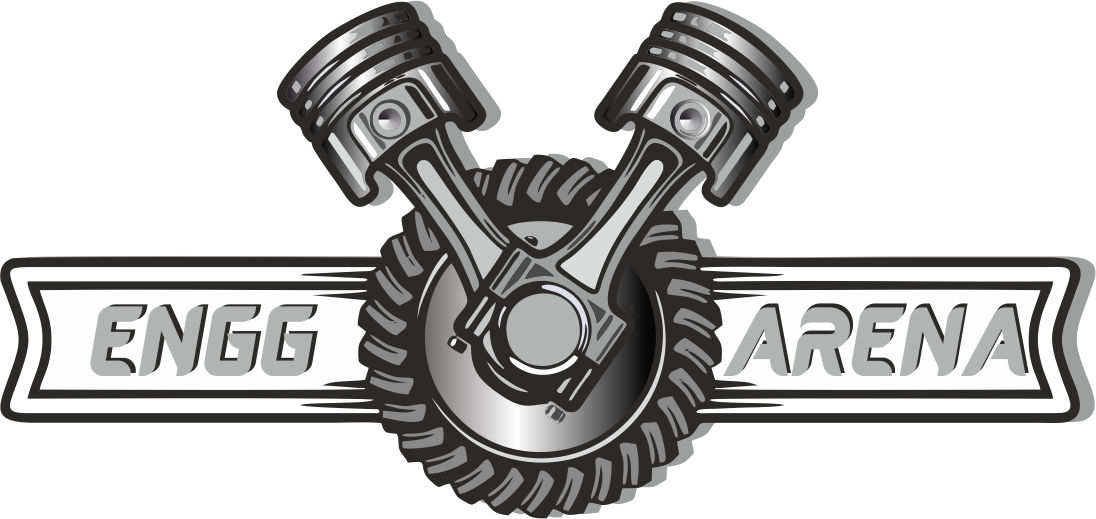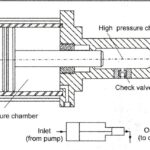Leakage from a hydraulic system can be a major problem leading to loss of efficiency, increased power usage, temperature rise, environmental damage, and safety hazard. Hydraulic seals must be used in order to prevent these losses and improve the efficiency of the system.
External leakage, on the other hand, is always serious. The principal cause of external leakage is improper installation or sealing failure.
Table of Contents
Types of Hydraulic Seals
- Bases on sealing (Positive seals and Non-positive seals)
Positive seals do not allow any leakage whatsoever it may be (Internal or External) whereas non-positive seals permit a small amount of internal leakage. - Based on applications (Static seals and Dynamic seals)
Static seals are used to seal two mating parts that have no relative motion between them. Whereas the dynamic seals are assembled between mating parts that move relative to each other. Hence dynamic seals are subjected to wear. - Based on the shape of seals
These seals include O rings, Quad ring seals, V packing, Cup packing, U packing, etc.
O rings
O ring gives very effective sealing at high pressure.
O rings are usually molded from rubber compounds however they can be molded or machined from plastic materials also.
 |
| O ring seal |
An O ring consists of an O ring mounted in the gland so that the O ring’s cross-section is compressed slightly when the gland is assembled.
Quad ring seals
This is a modified square type cross-section made up from homogeneous synthetic rubber.
 |
| Cross Section of Quad Ring Seal |
The quad ring is quite versatile and can be used as a static hydraulic seal as well for rotary and reciprocating motion. It is shown in the figure.
 |
| Dynamic & Static Application of Quad ring seal |
As opposed to an O ring, a quad ring seal has a more square cross-sectional shape with rounded corners.
The quad ring seal design offers more stability than the O ring design and practically eliminates the spiraling or twisting that is sometimes encountered with the O ring.
V-Ring Seal
Fabricated V-ring packings are capable of holding almost all pressure. V-ring is the part of the packing that does the sealing. It has a cross-section resembling the letter V from which its name is derived.
 |
| V-ring seal |
To achieve a seal, the V ding must be installed as part of a packing set or stack, which includes one male adapter, one female adapter, and several V rings.
The male adapter is the first ring on the pressure end of the packing stack and is flat on one side and wedge-shaped on the other to contain the V of the adjacent V-ring.
The female adapter is the last ring of the stack.
U Ring Seal
The fabricated U packing is also used in various dynamic sealing solutions. U packing is always used with a support ring as shown.
 |
| U-ring seal |
U packings are balanced packings; it seals on both the outer diameter and inside diameter, and are applied individually, not in stacks like V rings.
Cup Seal
Cup packings resemble a cup or deep dish with a hole in the center for mounting.
Cup seals are used exclusively to seal pistons in both low-pressure and high-pressure hydraulic and pneumatic applications.
They are produced from leather, homogeneous synthetic rubber, and fabric-reinforced synthetic rubber.
 |
| Cup seal |
Although the cup packing lip flares outwards, the rubbing contact is made at the lip only when the fluid pressure is low.
As the fluid pressure increases, the cup heel expands outwards until it contacts the cylinder wall, at which point high-pressure sealing is in effect.
As the pressure loading shifts the sealing line to the cup heel, the lip is actually pulled into the cup and away from the cylinder wall.
On the return stroke when the pressure is relaxed, the heel will shrink slightly, leaving only the lip in contact with the wall, avoiding unnecessary wear at the heel.
For reciprocating pistons, two cups installed back to back in separate glands are required.
Composite seals
These types of hydraulic seals are a combination of various types and are available in the form of sets. They are designed for special applications. A typical minimum friction seal set commonly used for cylinders is shown in the figure.
 |
| Composite seal |
It consists of five rings one central rubber ring and four adjacent plastic rings. The complete set when assembled acts as a single dynamic seal.





If some one wants to be updated with latest technologies
therefore he must be pay a visit this site and be up to date every day.
Have you ever thought about adding a little bit more than just your articles?
I mean, what you say is valuable and everything. But think of if you added some
great graphics or video clips to give your posts more, “pop”!
Your content is excellent but with pics and clips, this blog could definitely be one of the
most beneficial in its field. Superb blog!
Hello, i feel that i saw you visited my website thus i came to return the desire?.I am attempting to to find issues to
improve my website!I assume its good enough to use some of
your ideas!!
Wow, superb weblog structure! How lengthy have you been blogging for?
you make running a blog look easy. The whole look of your site is great, let alone the content!
I constantly emailed this blog post page to all my contacts,
for the reason that if like to read it after
that my friends will too.
Wow that was strange. I just wrote an very long
comment but after I clicked submit my comment didn’t show up.
Grrrr… well I’m not writing all that over again. Regardless, just wanted to say excellent blog!
It’s good to know that different types of hydraulic seals have different applications such as static and dynamic seals. My husband was talking about how he has been using new seals at work this past week. I don’t know anything about it so thanks for this informative article about seals!
I thought it was interesting when you mentioned that the o-ring is the most used static seal. I would imagine that it would be important to find a supplier with a great reputation when shopping for hydraulic supplies. If you are shopping for a highly-used product, you are going to want to make sure that it is made out of high-quality materials.
I like the content very much, I’m following your site, thank you.